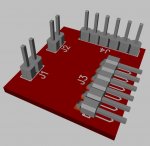All,
made some good progress on this effort. In fact, I have the thing running in datalogger mode (without any analog frontend of course, just a trimmer feeding the ADCs). Now the question is - what would people prefer - see attached poll.
For anybody not familiar with the topic, the original (long!) thread is here:
http://www.picaxeforum.co.uk/showthread.php?t=15814
Basically I am trying to decide if I should create the simplest, rock-bottom lowest-cost-possible instrument, or add some bells and whistles (and make it look much more professional).
The enclosure would make it look very similar to my DPScope (http://www.dpscope.com). It would also protect the circuit (and potentially allow use of higher voltages with a 1:10 probe without posing a hazard to the user). With an enclosure BNC connectors would be mandatory.
Thanks for taking the time to answer!
Wolfgang
made some good progress on this effort. In fact, I have the thing running in datalogger mode (without any analog frontend of course, just a trimmer feeding the ADCs). Now the question is - what would people prefer - see attached poll.
For anybody not familiar with the topic, the original (long!) thread is here:
http://www.picaxeforum.co.uk/showthread.php?t=15814
Basically I am trying to decide if I should create the simplest, rock-bottom lowest-cost-possible instrument, or add some bells and whistles (and make it look much more professional).
The enclosure would make it look very similar to my DPScope (http://www.dpscope.com). It would also protect the circuit (and potentially allow use of higher voltages with a 1:10 probe without posing a hazard to the user). With an enclosure BNC connectors would be mandatory.
Thanks for taking the time to answer!
Wolfgang
Last edited:




